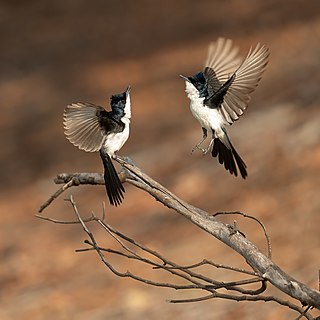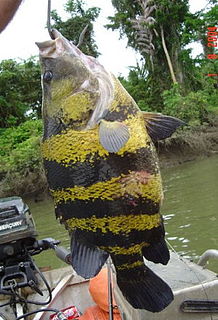
Glyphis is a genus in the family Carcharhinidae, commonly known as the river sharks. This genus was thought to contain five different species, but recent studies on molecular data revealed that the species Glyphis gangeticus has an irregular distribution in the Indo-West Pacific region. This genus contains only four extant species. Further species could easily remain undiscovered, due to the secretive habits of Glyphis sharks. Their precise geographic range is uncertain, but the known species are documented in parts of South Asia, Southeast Asia, New Guinea, and Australia. Of the four currently described species, the Ganges shark is restricted to freshwater, while the northern river shark and the speartooth shark are found in coastal marine waters, as well. While the bull shark is sometimes called both the river shark and the Ganges shark, it should not be confused with the river sharks of the genus Glyphis. The River sharks of the genus Glyphis remain very poorly known to science. They are facing a critically endangered status since river sharks are so poorly studied, and people know very little about their population and life history. One of the primary threats to River Sharks is habitat degradation which includes: human development, pollution, and fishing. The river shark is known to be one of the most rare sharks in the world. They have been found in nine different tidal areas, which consists of muddy waters with a low salinity. Their placement in connection to coastal marine waters indicate that they are usually born around October.

The Kikori River is a major river in southern Papua New Guinea on the island of New Guinea. With a total length of 445 km (277 mi) long and flows southeast into the Gulf of Papua, with its delta at the head of the gulf. The settlement of Kikori lies on the delta.

The fauna of New Guinea comprises a large number of species of mammals, reptiles, birds, fish, invertebrates and amphibians.

The speartooth shark is an extremely rare species of river shark, belonging to the family Carcharhinidae. It inhabits coastal marine waters and tidal reaches of large tropical rivers in northern Australia and New Guinea. Despite being a member of the river shark genus, it is also found in near-shore marine waters, favoring highly turbid environments over a wide range of salinities. This robustly built, gray-colored shark is characterized by a short and broad snout, tiny eyes, a relatively large second dorsal fin, and a black blotch beneath each pectoral fin near the tip. Another identifying trait is its teeth, which are large, triangular, and serrated in the upper jaw and narrow, spear-like, and serrated only near the tips in the lower jaw. Adults grow to about 2.6 m (8.5 ft) long.

Apogon is a large genus of fish in the family Apogonidae, the cardinalfishes. They are among the most common fish on coral reefs. Over 200 species have been classified in genus Apogon as members of several subgenera. Some of these subgenera, such as Ostorhinchus, have been elevated to genus status, leaving just over 50 species in the genus.

The spectacled hare-wallaby is a species of macropod found in Australia and New Guinea. In Australia, a small sub-population is found on Barrow Island, while the mainland type is widespread, though in decline, across northern regions of the country.

Lake Kutubu is a lake in the Southern Highlands Province of Papua New Guinea. It lies to the east of the Kikori River, into which it eventually drains. It is about 50 km southwest of Mendi, the provincial capital. It is one of the few lakes in the country that occurs in a depression in the rugged interior mountains. It is the second-largest lake in Papua New Guinea, after Lake Murray, and, at 800 m above sea level, the largest upland lake. The area of the lake is 49.24 km², while the total catchment area is 250 km². Lake Kutubu and Lake Sentani form an ecoregion on the WWF's Global 200.

Chilatherina is a genus of rainbowfishes that is endemic to freshwater in New Guinea.
Cinetodus is a genus of sea catfishes of the family Ariidae. These species originate from brackish and fresh waters of Irian Jaya, southern New Guinea and northern Australia.
Pingalla is a genus of freshwater fish in the family Terapontidae. These fish are native to northern Australia, but one species is also known from New Guinea.

Tomiyamichthys is a genus of gobies found from the Red Sea through the Indian Ocean to the western Pacific Ocean. The name of this genus honours the Japanese ichthyologist Itiro Tomiyama of the Tokyo Imperial University, who described the type species, Tomiyamichthys oni, in 1936.

The New Guinea mangroves is a mangrove ecoregion that covers extensive areas of the coastline New Guinea, the large island in the western Pacific Ocean north of Australia.
Toxotes lorentzi is a tropical freshwater fish found in streams and swamps of the Northern Territory of Australia, Irian Jaya (Indonesia), and Papua New Guinea. It was first named by Weber in 1910, and is commonly known as the primitive archerfish or Lorentz's archerfish.

The Trans Fly savanna and grasslands are a lowland ecoregion on the south coast of the island of New Guinea in both the Indonesian and Papua New Guinean sides of the island. With their monsoon and dry season climate these grasslands are quite different from the tropical rainforest that covers most of the island and resemble the landscape of northern Australia which lies to the south.

The Tonda Wildlife Management Area is a wetland of international importance and the largest protected area in Papua New Guinea. It is located in the south-western corner of the Western Province and is contiguous with Wasur National Park of Indonesia. It forms part of the Trans Fly savanna and grasslands ecoregion.

The paperbark flycatcher, also known as the little restless flycatcher, is a passerine bird in the family Monarchidae. It occurs in tropical woodland and riverine habitats of northern Australia and southern New Guinea. Previously, some authorities lumped the paperbark flycatcher as a distinctive subspecies of the restless flycatcher of southern and eastern Australia, with which it forms a superspecies.
Synclidopus is a genus of soles. The two species have numerous narrow dark and pale stripes. Both are endemic to eastern Australia. Adults of the best-known species, S. macleayanus live at moderate depths in the ocean, but migrate towards estuaries to spawn in the spring and summer. The young make their way up the estuary and river, only to return to the sea when they grow older. Less is known about S. hogani, only described in 2008, but it appears to be restricted to the Daintree River.

The Bensbach River is a river in southwestern Papua New Guinea. It is located just to the east of the Maro River in Merauke Regency, Indonesia, and just to the west of the Morehead River in Papua New Guinea.

Datnioides campbelli, the New Guinea tiger perch, New Guinea tigerfish or Campbell's tigerfish, is a species of datnioidid fish that is native to both fresh and brackish waters in rivers, swamps and tidal creeks in southern New Guinea, ranging from Lorentz River in Indonesia to Kikori River in Papua New Guinea. This predatory fish reaches up to 35 cm (14 in) in standard length.












